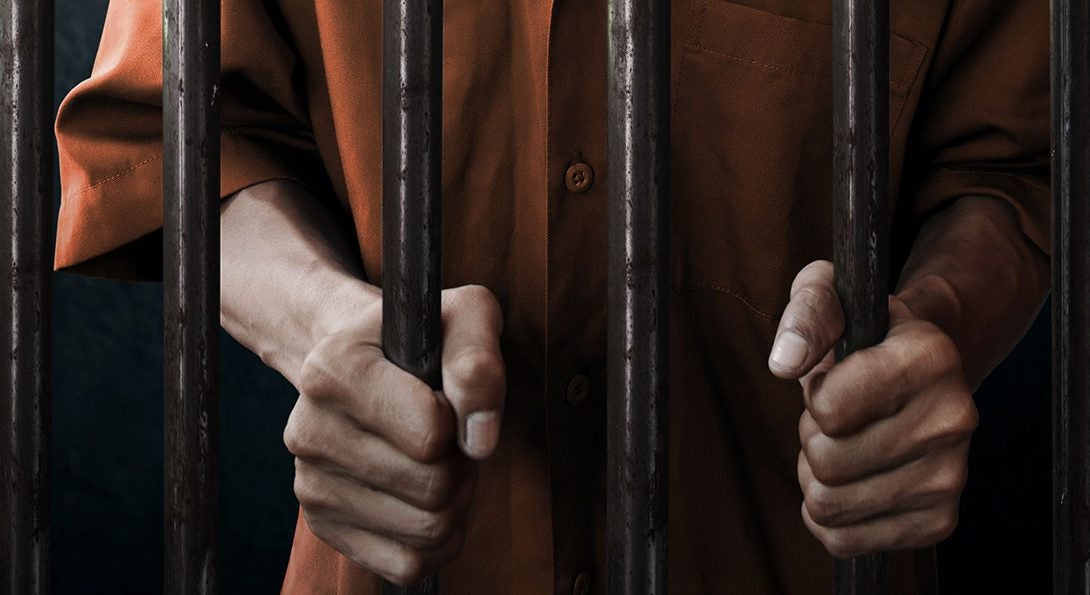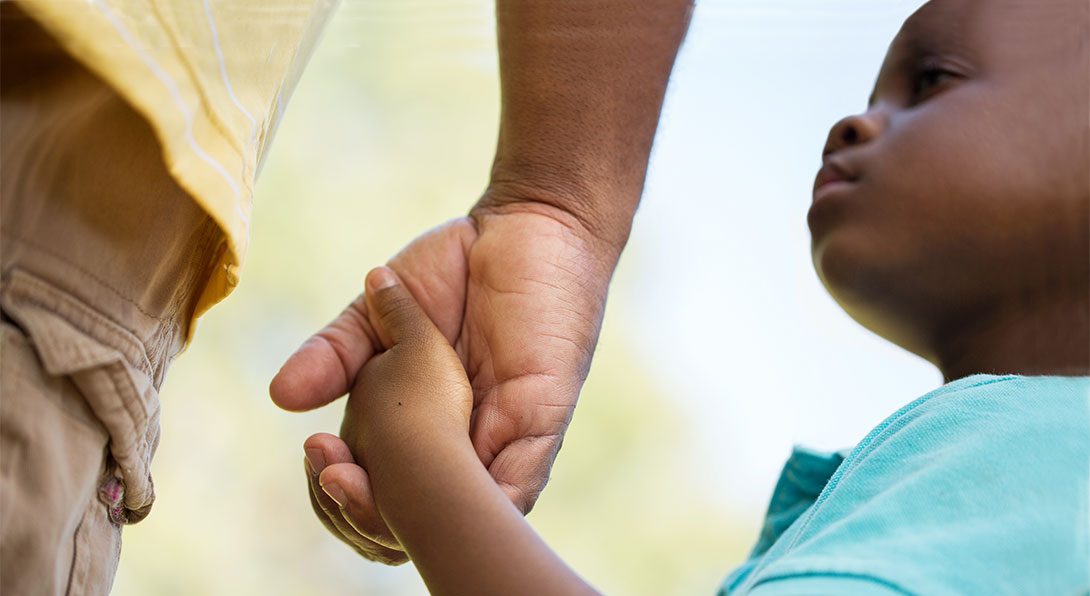Mass Incarceration: Punishing the Families

In America’s era of mass incarceration, a startling number of families experience the deleterious impact of the imprisonment of a family member. More sensible public policies are needed to address this crisis.
Introduction Heading link
The U.S. Bureau of Justice Statistics estimates that at year-end 2016 there were 6.61 million persons under the supervision of U.S. adult correctional systems, and 2.16 million persons under the jurisdiction of state or federal prisons or in the custody of local jails. While very high, these figures actually represent a trend of decreasing incarceration since 2007.
However, the United States still claims the dubious distinction of leading the world in the imprisonment of its citizens. Our unmatched levels of incarceration have not resulted from increasing crime, but from more punitive policies and practices, such as the war on drugs, three strikes laws, truth in sentencing laws and overzealous prosecution. Further, these laws have disproportionately impacted low-income families and communities of color.
Given how many people have been incarcerated, there is shockingly little conversation about the impact on their families. When a person is imprisoned, their family usually carries a tremendous burden, but they have been forgotten in the apparent rush toward more punitive policies, and a permanent focus on the prisoner and the offense.
When the Incarcerated Person is a Parent Heading link

Assistant Professor Branden McLeod has examined the relationships incarcerated fathers have with their children and family. He observes that children experience ambiguous loss when a parent is incarcerated; the parent is not permanently gone, but is missing from the child’s daily experience, and the parent’s identity and family role have been significantly altered. Further, the child’s access to the parent becomes very limited, a situation made worse when the parent has a longer sentence or if visitation is not possible. “Without regular contact with the parent, it’s hard for children to reconcile their emotions about that person,” observes McLeod. “We have to help families maintain those roles and identities in order to maintain healthy relationships.”
To accomplish this, he says there need to be more family-centered policies and programs to keep children connected with incarcerated parents. “There have been successful programs for this, but they tend to rely on volunteers from outside the prison,” says McLeod. “We need a serious nationwide commitment to preserving families, including robust visitation policies and supportive programs for family reunification.”
McLeod’s research has explored the impact of incarceration on paternal involvement, how fathers can be resilient once they reenter society and how they can reconnect and reestablish certain roles within their family. He has found complex relationships between fathers’ engagement, accessibility and responsibility with their children, including the role of co-parenting in mitigating impacts and improving outcomes for the children. He has also conducted a father and son study to examine the effects of paternal incarceration on educational outcomes for the son.
McLeod hopes his research will contribute to informing effective and supportive public policy. “Generally, there are not positive outcomes from incarceration; it’s merely punitive and doesn’t address underlying issues that exist in so many of our communities,” he says. “It costs about $40,000 per year to incarcerate someone which, again, doesn’t accomplish much and has so many deleterious effects.” He points to the dissolution of families, the mental health impacts on children, how many of the children end up in the child welfare system and, longer-term, the impacts on childrens’ educational and employment outcomes. “The money spent on incarceration needs to be reinvested in programs that keep families together and improve outcomes for the children,” he says.
While mass incarceration has overwhelmingly impacted men, especially men of color, the rate of incarceration of women is increasing. “Women make up approximately 10% of the prison population, but the number is growing,” adds Assistant Professor Aaron Gottlieb. “Women are more likely to be incarcerated for nonviolent offenses, are almost always victims of violence or sexual assault, and are more likely to have substance use issues. And more than 50% of these women are mothers.”
He observes that issues around the incarceration of women and mothers is under-discussed because of the relatively low numbers compared to men. “But prison doesn’t make the most sense for women,” he says, “not only because of the impact for children, but also because women’s prisons tend to have less programming than men’s prisons, fewer employment or education programs, and inadequate reproductive healthcare.”
Gottlieb’s research examines factors that bring women into the criminal justice system, and factors that keep them trapped in the system. For example, he studied the impact of eviction on criminal justice involvement for mothers in the U.S., and the data suggests that mothers who have been evicted have more than two times higher odds of experiencing criminal justice involvement. “Additionally, a system of money bail or money bond disproportionately impacts women,” Gottlieb says. “Twenty-eight percent of women behind bars are simply awaiting their trial, but are unable to pay the bail. People wait weeks or months, and in some cases years for their trial. This can have serious consequences for the family.”
Returning to the impacts on children, Gottlieb points to mental and physical health issues and higher risk for juvenile or criminal justice involvement. “Incarceration of a parent can also impact the resources children receive,” he says, referencing a study he co-authored with McLeod examining the impact of parental incarceration on child support arrears. Their study found that incarceration is a predictor of fathers’ accrual of child support debt. “When child support arrears pile up,” he says, “it adds additional stresses to family relationships.” McLeod adds, “The debt may become a further barrier to successful reentry and reintegration for the father. This again highlights the importance of policies that focus on the well-being of the family.”
The Further Impact on Families and Communities Heading link

The impact of incarceration on the families of prisoners has long been a focus in the work of Dean Creasie Finney Hairston. She explains that, while children are perhaps the most vulnerable members of the family, the impacts may be felt by spouses, partners, parents, siblings and cousins, and can extend beyond the family into the community. She notes that the impact on families may be financial, social or emotional.
Financial Impact
Dean Hairston notes that families become strained when the incarcerated person had been contributing financially. “Regardless of whether it was a legal job, income ‘under the table,’ or even from illegal activity,” she says, “that income is now gone and the family suffers. Imagine the impact to a family that was already struggling financially prior to the incarceration.”
In addition to potential lost income, she points to a variety of costs that may burden the family, costs that are often unanticipated. There can be legal costs such as counsel, appeals or sentence reduction. Maintaining a family relationship can bring a number of additional costs, including telephone calls from within the prison, which carry exorbitant fees. Families also bear the cost of visits to the prison. “Visiting an incarcerated family member may require substantial travel, since state prisons are often in remote areas, and a person in federal prison may be in a distant state. And traveling requires food and lodging,” Hairston says. “Even video visitation has costs associated with it. It can get very expensive for families trying to maintain a relationship with an incarcerated individual.”
There are also financial costs of supporting and maintaining an incarcerated person. “Even if the person has a job in prison, the pay is very low,” says Hairston. “So when there are things that they need or want – an extra pair of shoes, money for the commissary, books, magazines or art supplies – a family member or friend has to send the money or send the item. It all adds up. The combination of lost income and increased expenses can plunge a family into poverty.”
Social Impact
The social costs to families are very real and very practical, yet rarely recognized or discussed by academics or policymakers. “Social costs are more to do with the absence of that person from the home, and what it means for the family,” says Hairston. “What was the person’s role in that family? Whatever it is or was, that is now disrupted. That relationship has now changed.” She cites as examples life situations that may be taken for granted until a person is removed from the family. “Is the incarcerated person the one who picked the kids up from school? Were they the one who changed the light bulbs in the high ceilings? Such things might seem insignificant,” she says, “but can have a cumulative impact on family life.”
People may also experience stigmatization simply for having a family member in prison, or for being related to someone who committed a crime. “Often, whatever that person did to be imprisoned, the perception is transferred to his or her family members,” says Hairston. “If you’re the mother, people may think ‘How did you raise that person?’ Or if you’re a partner, ‘Why are you maintaining contact with that awful person?’ This overlooks the important fact that the incarcerated person is more than their worst deed. They are a father, a sister, a son or a brother.”
Hairston also points to the common perception that in communities with high rates of incarceration, there is no stigma attached to being incarcerated. She explains that it may depend upon the particular offense. For example, being sentenced for selling marijuana may be seen as acceptable, whereas shooting an infant in a drive-by or mugging and beating an elderly woman would be viewed very negatively. “The family must deal with what people think about the crime and about them. How do you protect your kids from this, while also being supportive of the family member who may have done something really bad,” she asks. “It’s very complicated and can be a difficult balancing act for the family as they struggle to maintain some sense of stability or normalcy.”
Finally, there are the social costs that incarceration has exacted on entire communities. When large numbers of people (most often men) are removed from the community, many social relationships become disrupted which, in turn, impacts the social ecology. There is a ripple effect that moves throughout the community. For example, the incarceration of a parent may contribute to children acting out in school. Schools may respond by enforcing zero-tolerance policies, punishing even small infractions. Many such children will end up in special education, with an increased likelihood of contact with the juvenile justice or criminal justice systems.
Emotional Impact
Having already experienced the stress of an arrest, the wait for the trial and then the trial itself, families are further taxed emotionally during the incarceration, especially if they are trying to maintain a relationship with the person in prison. There is the obvious emotional cost of just knowing that the family member is in prison, or seeing them in that environment. But there can be additional costs, such as going to a parole hearing only to hear that parole is denied. “There is an uncertainty that is very stressful for the family,” says Hairston. “They never know what’s going to happen, at trial or at a parole hearing. Or even on a visit, when they arrive at the prison but it’s on lockdown, so they’re prevented from seeing the family member.”
She goes on to explain that this is why families so often say it feels as if they are doing time, that they are being punished. “A prisoner’s life is no longer his or her own, but neither is the life of the family. There are so many things over which they have no control. Someone else makes all these decisions, exercising a kind of control over their lives,” she says. As an example, when on a visit, the treatment families receive from prison staff can make them feel as if they are prisoners. “The dress code for visitation can vary not only from prison to prison, but also from day to day at a single prison, depending on who is processing,” says Hairston. “It creates great uncertainty and stress for the family.”
There are also emotions around the loss of the person from family life. People may experience grief for the loss of their incarcerated family member, but the experience is different from when someone has died. “When someone in the family dies, there is a funeral and a eulogy saying nice things, and people bring food and they grieve with you,” Hairston says. “But when someone goes to prison, you grieve alone, you don’t get that support.”
Costs Continue Even After Community Reentry
Most incarcerated people do return to the community and, while this is generally the desired outcome, there are still costs and difficulties for the family. Dean Hairston points to practical costs such as supporting the person while they seek employment. “Formerly incarcerated people face many obstacles to finding and keeping gainful employment. Movements like Ban the Box are making some progress, but supporting the person as they struggle to find employment can add substantial financial difficulty for the family,” she says.
Formerly incarcerated people often have health issues, some of which were acquired during their time in prison. This may include chronic health conditions such as asthma, diabetes, high blood pressure or sexually transmitted disease. In addition to producing more strain on the family, the person’s health needs may further reduce their chances for employment.
Hairston adds that families continue to deal with social and emotional issues even after the person has returned home. Have family relationships changed? Can the person resume their former role in the family? Or in the community? What if no one will hire them? Do family members harbor resentment toward the person, even unconsciously? “There are many variables and questions that can make reintegration a difficult process for the entire family,” she says.
All of this underscores the pressing need for public policies that take a more holistic view. The national focus on punishment at any cost has served to punish families and damage communities. The well-being of these communities depends in large part on putting an end to mass incarceration, and placing families at the center of public policy decisions.